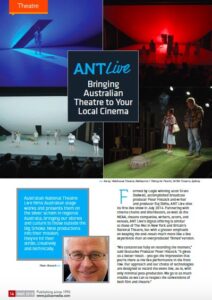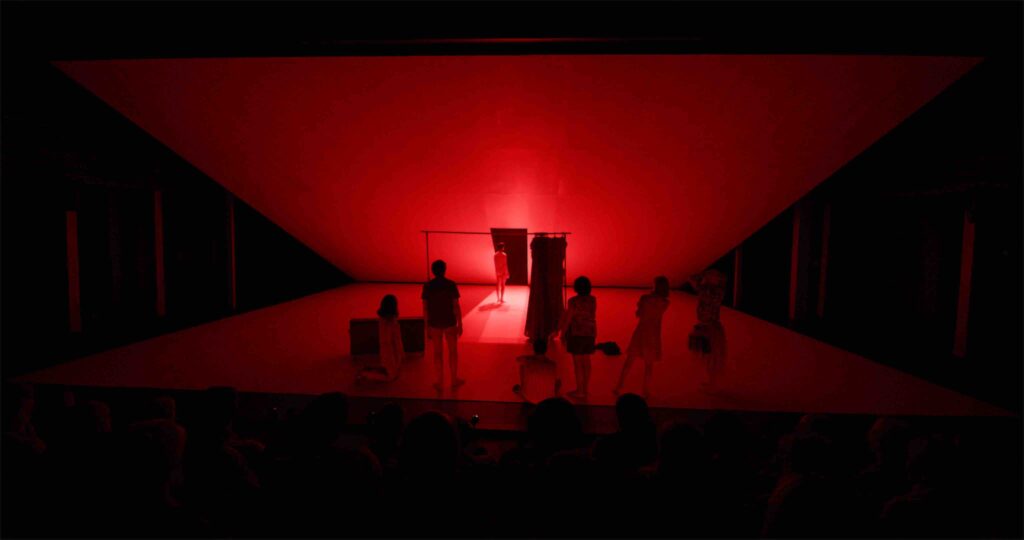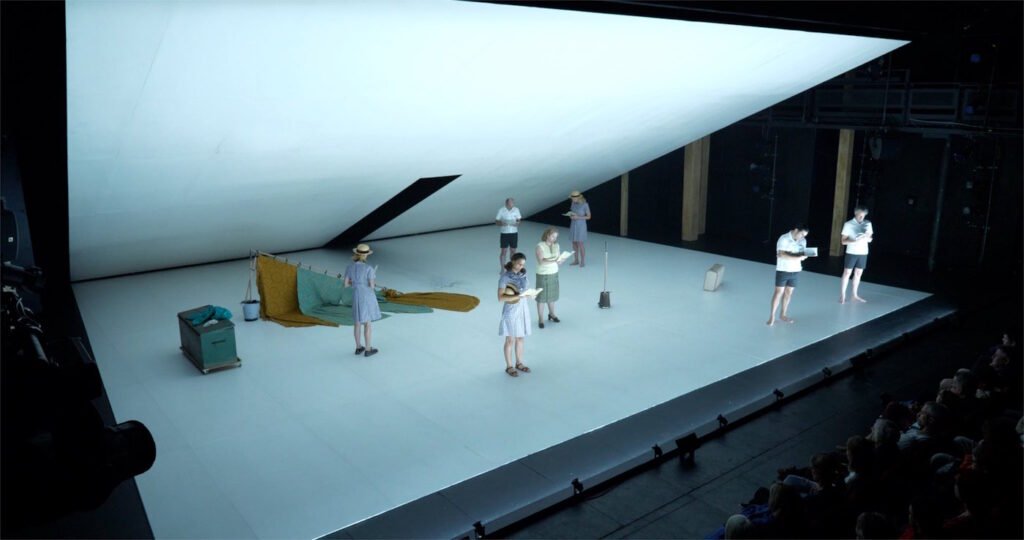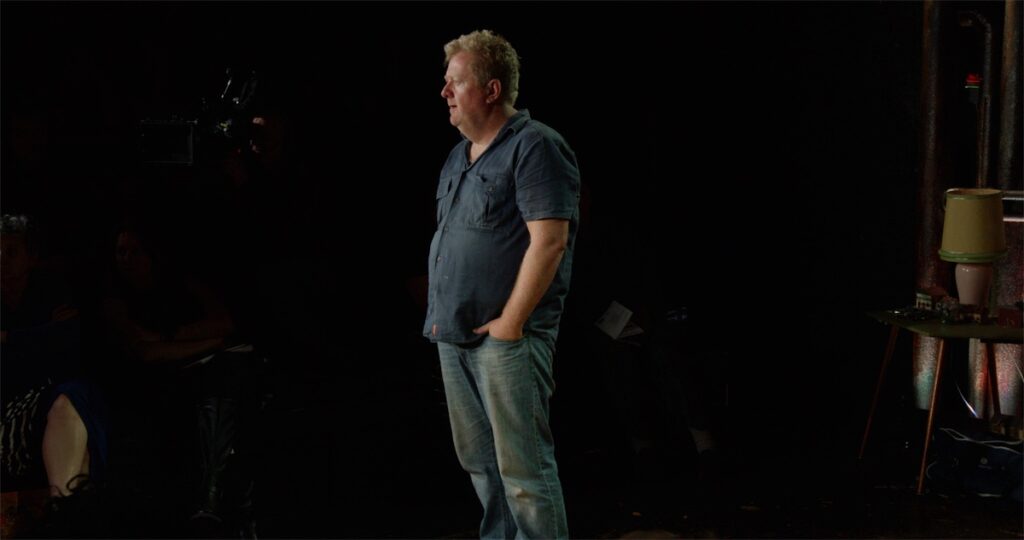News
22 Mar 2018
ANT Live – Bringing Australian Theatre to Your Local Cinema

Subscribe to CX E-News
THEATRE
ANT Live – Bringing Australian Theatre to Your Local Cinema
Australian National Theatre Live films Australian stage works and presents them on the silver screen in regional Australia, bringing our stories and culture to those outside the Big Smoke. Nine productions into their mission, they’ve hit their stride, creatively and technically.
Formed by Logie winning actor Grant Dodwell, accomplished broadcast producer Peter Hiscock and writer and producer Raj Sidhu, ANT Live shot its first live show in July 2014.
Partnering with cinema chains and distributors, as well as the MEAA, theatre companies, writers, actors, and venues, ANT Live’s digital offering is similar to those of The Met in New York and Britain’s National Theatre, but with a greater emphasis on keeping the end-result much more like a live experience than an overproduced ‘filmed’ version.

Peter Hiscock
“We concentrate fully on recording the moment,” said Executive Producer Peter Hiscock. “It gives us a better result – you get the impression that you’re there at the live performance in the front row. Our approach and our choice of technologies are designed to record the event live, as-is, with only minimal post-production. We go to as much trouble as we can to respect the conventions of both film and theatre.”
Setting The Stage
In order to make the whole process work, it begins with ANT Live’s relationship with the creators. “We have developed great relationships with the theatre companies,” continued Peter.
“They can see the advantages in filming and distributing their productions. We choose to film Australian works only. We negotiate with the companies, actors, agents, unions, and writers. When a show is green-lit, we employ a regular crew, pick a day separate to the normal season, and invite an audience to see the show for free, so release issues are dealt with.”
Technically speaking, ANT Live have developed a streamlined tech process that is at once as simple and as complicated as it needs to be.
“We bump-in four or five hours before curtain,” Peter explained. “We do a quick camera check and focus with the lighting crew, record the show in one take, and leave. We have an option in our agreements to call the actors back to redo something that h
asn’t been captured successfully, but that’s really only there for the actors in case they’re not satisfied with their performance.
“We’ve only ever had to do it once, and that was for technical reasons. It’s all carefully planned, and we’re confident that we can capture everything successfully in one live performance.”
- ‘Away’, Malthouse Theatre, Melbourne
- ‘Away’, Malthouse Theatre, Melbourne
Getting The Shot
One of the secrets to ANT Live’s technical success is their capability to film a show without altering the lighting in any way.
“Normally, when a broadcast crew film a theatre show for a promo, you spend half a day adjusting lighting levels to suit the cameras,” related Con Filippidis, who worked on ANT Live’s shoots of ‘Away’ as DoP, and as camera operator and VariCam consultant under DoP Paul Howard on ‘Diving for Pearls’.
“Theatre lighting levels are made for the human eye. We have chosen to use Panasonic VariCams that have dual native ISO. When we first got them, we started shooting at the 5000 base ISO, then dropped down to 4000 to give a cleaner edge.

Con Filipiddis
“On the first test, we started checking each lighting state, and found the cameras could handle the whole range without any changes. At ISO 4000 I can open up my iris for the dark scenes and close down for the bright. I can cope with the full range at that ISO, and that’s a big deal – it matches what the human eye can see. The VariCams also have beautiful skin tones; the palette is very natural and organic.”
Con’s other tip for live theatre filming success is in homogenising your rig.“Matching lenses and sensors is a big thing in a multi-camera situation,” Con offered, “which is why we use Cabrio lenses on VariCams.
“Apart from two Panasonic DC-GH5s used as locked-off wide-shots, it’s all VariCam 35s and LTs. Using the same lenses is so important –lenses have their owncharacteristics, aberrations and biases. If you take the time to match cameras and lenses, there’s not much need to grade in post-production, which is a big cost and time imposition.”
- Diving for Pearls, Griffin
- Away, Malthouse
Capturing the Word
With the majority of ANT Live’s productions being unamplified spoken drama, there’s been no existing audio built-in to the show to record (the exception was Windmill Theatre Co and State Theatre Company South Australia’s production of the musical ‘Rumpelstiltskin’, which had the luxury of a full multi-tracked band and radio mics on all performers.)

Mario Pellegrino
Mario Pellegrino of G-Clef Productions has captured audio for four ANT Live’s shows; “Unlike a broadcast drama production, it’s all live, and once it’s started you can’t interrupt it,” said Mario. “You can’t use boom mics unless they’re way up in the grid, which defeats the purpose, so you’ve got to fit and conceal radio microphones.”
“Once you’ve wired up a performer, they’re on their own,” Mario continued. “If there’s no hair or costume changes, it’s OK. But inevitably, most productions have costume changes, some on stage.
“Before we shoot, Sue, my radio tech, and I will look at the play to figure out where to put the mics, and then she’s backstage adjusting mics during changes. In Katherine Thomson’s ‘Diving for Pearls’, every cast member had costume changes, and one character had nine, including hair changes, so that ruled out a hair mic.
“We also had one character pour a drum of water over his head. We’ve got a mic that handles moisture or a little water, so we used that and placed it to one side and asked the actor to try to guide most of the water away from it. It’s about having a rapport with the actor.”
- Diving for Pearls
- Away
Setting Standards
When it comes to radio mics, Mario is a dedicated Sennheiser fan. “I use Setting Sennheiser for transmit and receive because I love the sound, and I think Standards they’re more advanced than some competitors,” he observed.
“I like the fact all of their connections are the same, so if you change models, you can keep using your hardware. I’m currently using 3000 Series receivers, and, depending on what we’re doing, the SK 5012 miniature bodypack transmitters.
 “I use a mix of Sennheiser, Countryman and Sanken microphones. The output from the receivers goes straight into a Sound Devices multitrack recorder. I record it, send a mix-down to the control room, or give the producers comms. In some cases I lock to all the cameras with timecode, and I always record as 48 Khz 24 bit wav files. I also mix in two Sanken booms as audience mics which I’ve rigged with wireless transmitters.”
“I use a mix of Sennheiser, Countryman and Sanken microphones. The output from the receivers goes straight into a Sound Devices multitrack recorder. I record it, send a mix-down to the control room, or give the producers comms. In some cases I lock to all the cameras with timecode, and I always record as 48 Khz 24 bit wav files. I also mix in two Sanken booms as audience mics which I’ve rigged with wireless transmitters.”
Working in theatres around Australia, from the intimate to the epic, from musical to drama, how do Mario, Con, Peter and the crew adapt to each differing shoot?
“It’s a challenge each time,” reflected Mario. “Each show is different. Our techniques have become more technically advanced since we first started. We don’t have a formula, but we do have a standard way of working. We’re not filming a movie, so it’s not shot, recorded, or edited like a movie, and in the end, the creates a better experience for the audience.”
Read more about Australian National Theatre Live at www.antlive.com.au
 This article first appeared in the print edition of CX Magazine March 2018, pp.14-18. CX Magazine is Australia and New Zealand’s only publication dedicated to entertainment technology news and issues. Read all editions for free or search our archive www.cxnetwork.com.au
This article first appeared in the print edition of CX Magazine March 2018, pp.14-18. CX Magazine is Australia and New Zealand’s only publication dedicated to entertainment technology news and issues. Read all editions for free or search our archive www.cxnetwork.com.au
Subscribe
Published monthly since 1991, our famous AV industry magazine is free for download or pay for print. Subscribers also receive CX News, our free weekly email with the latest industry news and jobs.













